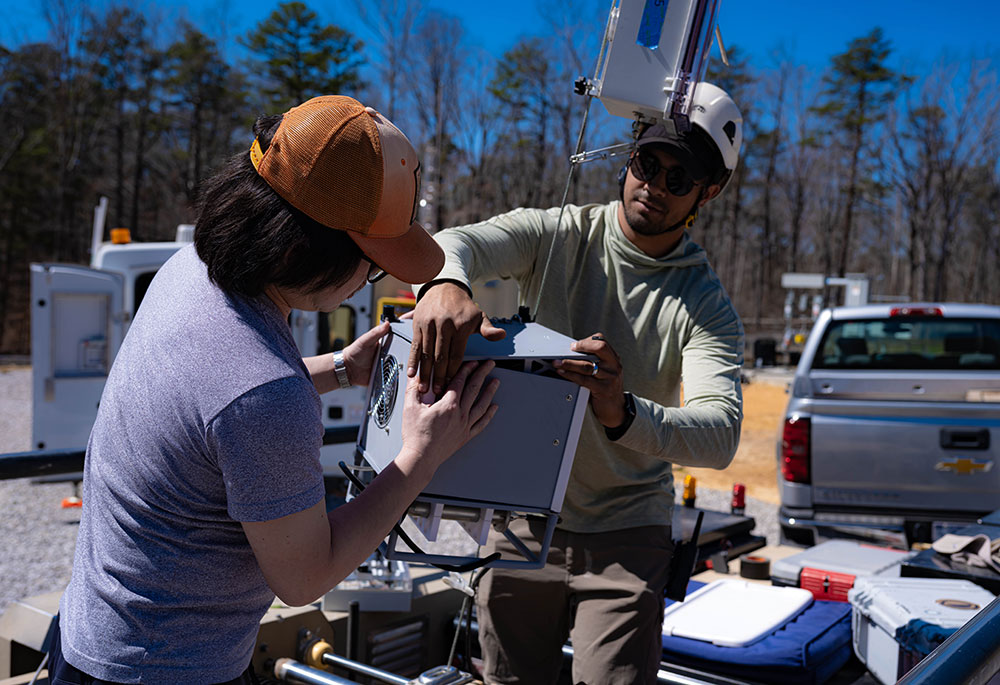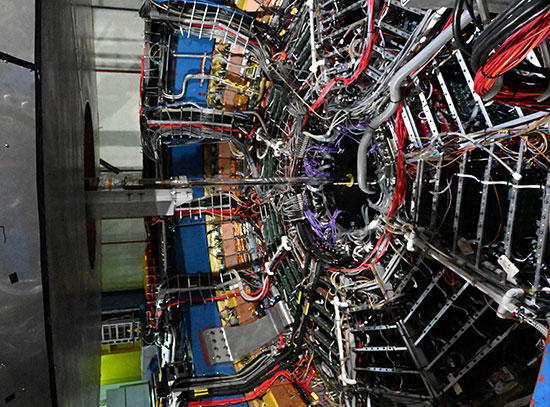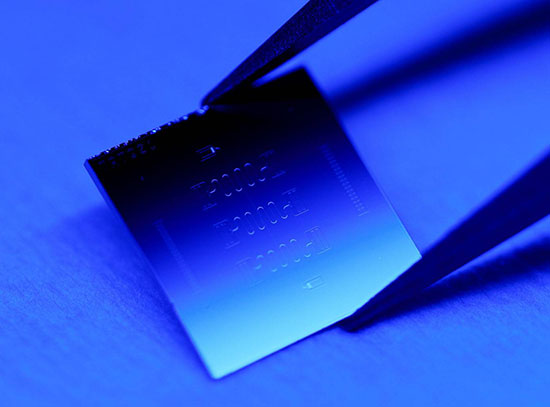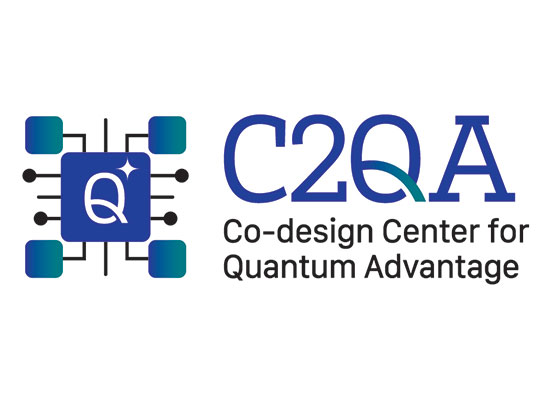Chongai Kuang Honored for Aerosol Research
Award recognizes contributions to measuring and studying the effects of tiny particles suspended in Earth's atmosphere
November 13, 2025
 enlarge
enlarge
Chongai Kuang, an atmospheric scientist at Brookhaven National Laboratory, is being honored for his development of aerosol-sampling instruments and their use in atmospheric studies. (Kevin Coughlin/Brookhaven National Laboratory)
UPTON, N.Y. — Chongai Kuang, an atmospheric scientist at the U.S. Department of Energy’s (DOE) Brookhaven National Laboratory, has been awarded the Benjamin Y. H. Liu Award by the American Association for Aerosol Research (AAAR). Kuang, a member of Brookhaven Lab’s Environmental Science and Technologies Department, is being recognized for his contributions to building instruments to measure atmospheric aerosols — tiny particles suspended in the atmosphere — and for designing experiments to understand how these particles influence the formation of clouds, weather systems, and Earth’s energy balance.
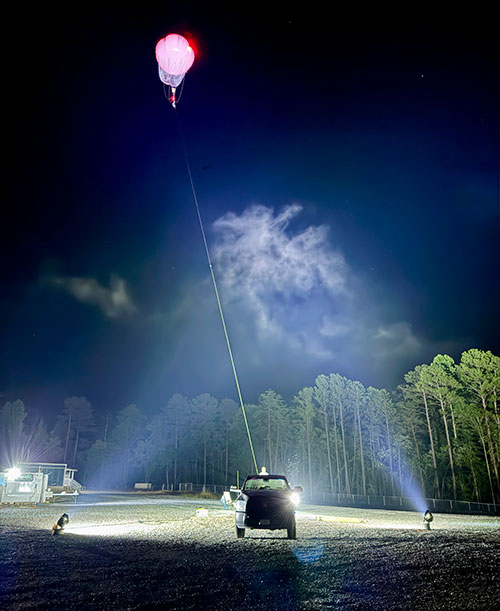 enlarge
enlarge
A tethered balloon collecting data at the Bankhead National Forest observatory. (ARM User Facility)
The award, named in honor of Benjamin Liu, a founding father of the AAAR and of the society's journal, recognizes outstanding contributions to aerosol instrumentation and experimental techniques that have significantly advanced the science and technology of aerosols. It was presented to Kuang during the AAAR 2025 Annual Conference on Wednesday, Oct. 15, 2025, in Buffalo, New York.
“Winning this award is deeply gratifying both because of the great legacy of Benjamin Liu and his impact on aerosol science and because of the affinity I have for the AAAR organization and community,” said Kuang.
Kuang’s career has been dedicated to making precision measurements of the smallest aerosols — those that form when molecules of gases in the atmosphere condense and aggregate to form particles spanning just a few billionths of a meter. These tiny “nucleation” specks, which form from gases emitted by vehicles, factories, power plants, and natural sources such as forests and phytoplankton, are the largest source of aerosols that eventually cluster and grow to impact large-scale atmospheric processes — things like cloud formation and weather.
“As critical drivers of weather, water availability, air quality, and other phenomena of societal relevance, tiny aerosol particles can have big impacts,” Kuang said.
Kuang’s emphasis on developing novel aerosol detection methods has led to a suite of groundbreaking instruments and techniques that have opened new frontiers in aerosol science. For example, Kuang pioneered modifications to standard “condensation particle counters” to achieve unprecedented sensitivity to particles measuring less than two nanometers. His improvements achieved far higher efficiency in detecting these previously “invisible” freshly formed particles compared with existing instruments. His design is now the standard tool for making such measurements in field studies and for validating models of aerosol formation.
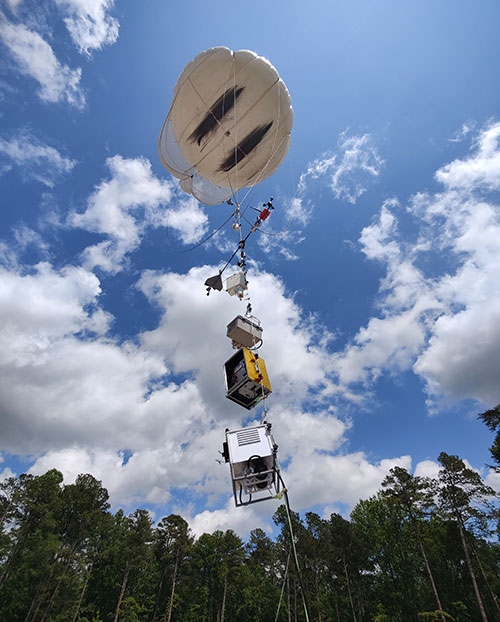 enlarge
enlarge
Atmospheric and aerosol instrumentation attached to a tethered balloon. (Chongai Kuang/Brookhaven National Laboratory)
Kuang’s additional modifications to particle counters, spectrometers, and other instruments, including water-based systems, have simplified operation, reduced safety concerns, and increased the portability of these devices for use in field studies. His exploration of different fluids in particle detection and studies combining “batteries” of detection tools have facilitated a deeper understanding of the particle formation, or “nucleation,” process and offered new insight into how chemistry affects the activation of particles.
“Chongai’s innovations are characterized by both technical ingenuity and scientific insight: each device has been designed to address a critical gap in measurement capability, and each has proven its worth by enabling new science,” said Gijs de Boer, Brookhaven Lab’s interim associate laboratory director for Environment, Biology, Nuclear Science & Nonproliferation.
Kuang has also pioneered new field measurement techniques now being adopted by the broader aerosol research community. As one example, during a field study led by DOE’s Atmospheric Radiation Measurement (ARM) User Facility in and around Houston, Texas, he led advanced aerosol sampling campaigns by attaching sensitive particle counters to large tethered balloons. This campaign allowed the team to profile the vertical distribution of nanometer-scale particles, capturing the nucleation process in ways that instruments mounted at ground level or carried high aloft on airplanes cannot.
Kuang’s techniques for measuring the smallest particles over large spatial dimensions and over time have been used in intensive field studies in the Amazon, the Azores, and the continental U.S., leading to new discoveries about aerosol particle formation under diverse conditions. As the leader of the science team for ARM’s newest observatory, located in Alabama’s Bankhead National Forest, Kuang is again expanding the temporal and spatial scales for aerosol studies. That observatory includes sampling sites both within and beyond the forest to gain insight into how forests and the greater surrounding environment contribute to aerosol formation.
Throughout these field campaigns and his entire career, Kuang’s contributions to refining instruments, enhancing calibration procedures, and rigorously investigating uncertainties have been essential to providing confidence in the long-term aerosol observations scientists are using to better understand the complex dynamics of Earth’s atmosphere.
Kuang is also recognized as a mentor, a collaborator, and a leader. He actively trains students and next-generation scientists and brings colleagues together to tackle important, complex questions that cannot be answered by any single research group alone.
Chongai Kuang earned his B.S. in chemical engineering and chemistry from the University of California, Berkeley, in 2004, and his Ph.D. in chemical engineering and nanoparticle science and technology from the University of Minnesota in 2009. He joined Brookhaven Lab as a postdoctoral research associate one week later, advancing to assistant scientist in 2011. He’s a member of the American Geophysical Union and AAAR, and he was awarded the Sheldon K. Friedlander Award from AAAR in 2012.
Kuang’s work at Brookhaven Lab is supported primarily by the DOE Office of Science through the ARM User Facility, a network of atmospheric observatories and measurement platforms, and the Atmospheric System Research program that makes use of ARM data for scientific studies.
The Benjamin Y. H. Liu Award honors Benjamin Liu for his leadership in the aerosol community and his own seminal contributions to aerosol science through instrumentation and experimental research. Liu was a founding father of the AAAR and of the society’s journal, Aerosol Science and Technology, and helped establish the International Aerosol Research Assembly. He received the Fuchs Memorial Award in 1994 and retired as Regents’ Professor from the University of Minnesota in 2002, where he also served as the director of the Particle Technology Laboratory from 1973 to 1997.
Brookhaven National Laboratory is supported by the Office of Science of the U.S. Department of Energy. The Office of Science is the single largest supporter of basic research in the physical sciences in the United States and is working to address some of the most pressing challenges of our time. For more information, visit science.energy.gov.
Follow @BrookhavenLab on social media. Find us on Instagram, LinkedIn, X, and Facebook.
2025-22588 | INT/EXT | Newsroom




